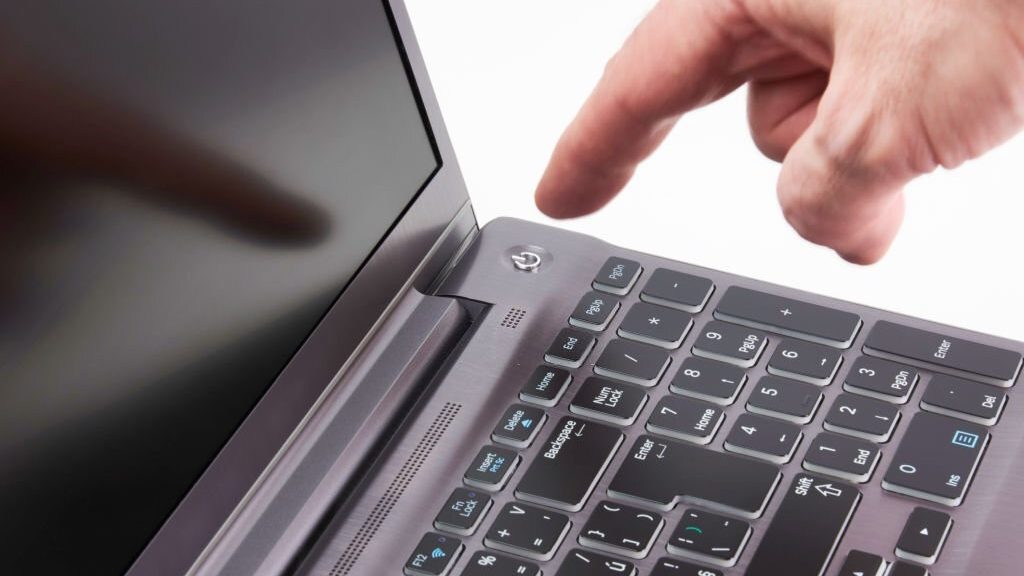Try to reset your Dell laptop, do you? Fortunately, I have the ideal guide for you. Today, we’ll look into Dell laptop restarting.
Learn how to restart your system correctly whether you are having a tiny problem or just want to improve its performance.
And if you ever need to shut down your Dell laptop by force, I can help with that too! So get a coffee, and let’s get your Dell laptop working properly once again.
When Should You Restart Your Dell Laptop?
Restarting your Dell laptop can work wonders for its performance, but when exactly should you hit that restart button? Well, there are several situations where a restart is highly recommended.
- After installing new software, giving your laptop a fresh start ensures smooth integration and optimal functionality.
- If you’re planning to update your computer, a restart is often necessary to apply the changes effectively.
- In the unfortunate event of a virus detection, removing the threat and restarting your laptop is essential.
So, where is the start button on a Dell laptop? It’ s usually located in the lower-left corner of the screen, represented by the familiar Windows logo.
Resetting A Dell Laptop
Resetting your Dell laptop can be a game-changer when you encounter some stubborn issues that just will not go away.
Dell hard reset becomes your ultimate solution, albeit at the cost of losing your data. But fear not! This step wipes the slate clean, giving you a fresh Windows install, free from sluggishness and pesky bloatware.
It’s like a rejuvenating spa treatment for your device. Moreover, if your laptop has fallen victim to a virus, resetting is the quickest way to bid it farewell for good
How to Restart a Dell Laptop

Method #1: Using the Windows Start Menu
The Windows Start Menu makes it simple to restart your Dell laptop. The steps are summarised simply as follows:
- Click on the Windows icon in the bottom left corner of your screen or, if your keyboard has one, hit the Windows key to access the Windows Start Menu.
- Look for the Power Button icon in the menu, which is located above the Windows icon.
- Three options are displayed when you click on the Power Button icon: sleep mode, complete shutdown, and restart.
- To start the restart procedure, choose “Restart”.
Method #2: Using The Built-in Power Button
If you find your Dell laptop acting up, unresponsive, or unlock your dell keyboard, a Hard Restart using the power button might do the trick.
This method should be your last resort when all else fails.
Step 1: Disconnect any peripherals like a mouse, external hard drives, keyboards, and USB devices. Neglecting this step may cause damage.
Step 2: Press and hold the Power Button on your laptop until it completely powers off. Give it a moment, then press the power button again to turn it back on.
Method #3: Using the Command Prompt
- In the search bar, type “cmd” after pressing the Windows key.
- From the search results, choose Command Prompt.
- The Command Prompt, a black window with white text, will appear.
- To restart your Dell laptop, type “shutdown -r” in the Command Prompt and click Enter.
- You can also type “shutdown -s” to shut down your laptop instead of restarting it.
Reseting A Dell Laptop
Resetting your Dell laptop can be a game-changer when you encounter some stubborn issues that just will not go away.
Dell hard reset becomes your ultimate solution, albeit at the cost of losing your data. But fear not! This step wipes the slate clean, giving you a fresh Windows install, free from sluggishness and pesky bloatware.
It’s like a rejuvenating spa treatment for your device. Moreover, if your laptop has fallen victim to a virus, resetting is the quickest way to bid it farewell for good
Why You Nееd To Rеѕtаrt Уоur Laptop

1. To Solve Common Problems
Sometimes, your laptop starts acting up, throwing tantrums like a stubborn toddler. That’s when a restart comes to the rescue. Restarting your laptop can fix a myriad of common issues, like frozen screens, unresponsive applications, or sluggish performance. It’s like a digital reset button that wipes away those pesky problems, allowing your laptop to start afresh.
2. To Install Updates
Updating your laptop’s software is crucial for optimal performance and security. Restarting your laptop after installing updates ensures that those changes take effect.
These updates often include bug fixes, security patches, and performance enhancements.
3. To Save Power
If you’re concerned about conserving energy and maximizing battery life, restarting your laptop plays a role here too.
When you shut down and restart your laptop, it helps clear out unnecessary processes and programs running in the background, freeing up valuable system resources.
This efficient use of resources can contribute to longer battery life and more sustainable power consumption.
4. To Keep Things Running Smoothly
Over time, your laptop accumulates temporary files, cache, and other digital clutter. This buildup can slow down your system and hinder performance.
By restarting your laptop, you give it a chance to clear out those unnecessary files and refresh its memory. It’s like a mini spring cleaning session for your laptop, ensuring smoother operation and improved responsiveness.
5. To Prepare for a Software Installation
When you are about to install new software or make system changes, restarting your laptop is a wise move.
This action ensures that your laptop starts with a clean slate, reducing the chances of conflicts or compatibility issues.
It provides a stable foundation for the installation process, giving your laptop the best chance to adapt seamlessly to the changes you’re about to make.
Remember, when encountering issues like a Dell XPS hard reset or your Dell docking station not detecting a monitor, a simple restart can often be the first step toward resolving these problems
Wrapping Up!
Knowing how to restart your Dell laptop is an essential skill for troubleshooting common faults, optimising performance, and ensuring a pleasant computing experience.
You can address numerous problems, install updates for improved functionality and security, save power and maximise battery life, maintain your system running smoothly, and prepare for software installations by restarting your laptop.
Whether you’re dealing with a Dell XPS hard reset or your Dell docking station isn’t identifying a monitor, a simple restart is frequently the first step in fixing these issues.